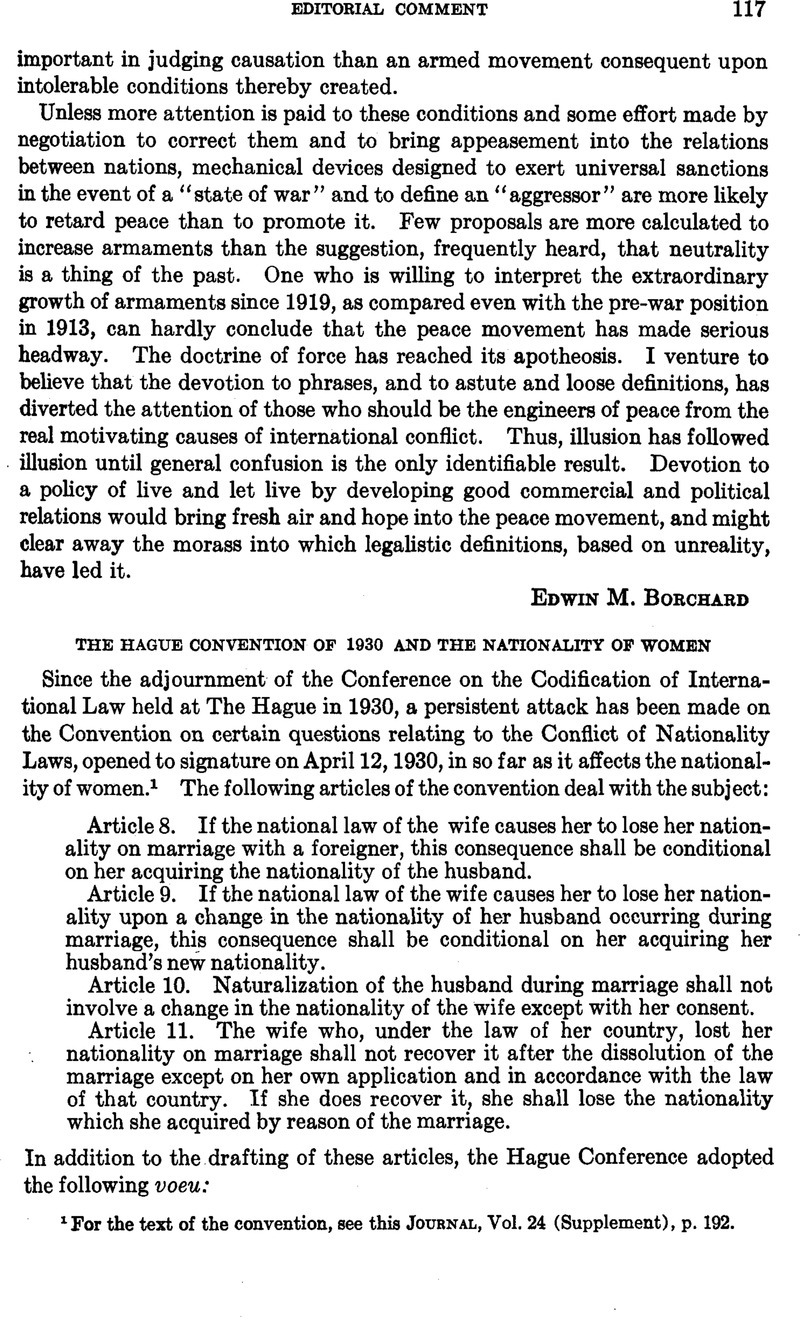Published online by Cambridge University Press: 12 April 2017

1 For the text of the convention, see this Journal, Vol. 24 (Supplement), p. 192.
2 League of Nations Official Journal, 1931, p. 232.
3 League of Nations Document, A. 19. 1931. V.
4 Id., A. 41. 1931. V.
5 League of Nations Official Journal, 1931, Special Supplement No. 93, p. 144.
6 League of Nations Document, A. 15.1932. V; A. 15 (a). 1932. V; A. 15 (b). 1932. V.
7 The report of the First Committee to the Thirteenth Assembly states that observations were made by 33 governments. League of Nations Document, A. 61.1932. V.
8 League of Nations Document, A. 23.1932. V.
9 Id., A. 33. 1932. V.
10 The most significant of these proposals was that by M. Rolin (Belgium), calling for a protocol amending the convention by substituting the word “person” for the word “woman” in Articles 8–11.
11 Verbatim Record of the Thirteenth Assembly, Tenth Meeting, 1932, p. 8.
12 Verbatim Record of the Thirteenth Assembly, Tenth Meeting, 1932, p. 6.
13 Id., p. 9.
14 League of Nations Document, A. 6 (a). 1932. V. Annex.
15 See, especially, Scott, James Brown, “Unprogressive Codification of Nationality at The Hague,” 18 Women Lawyers’ Journal (1930), Nos. 2, 3 and 4, p. 4 Google Scholar ff.